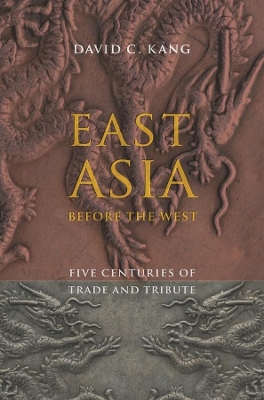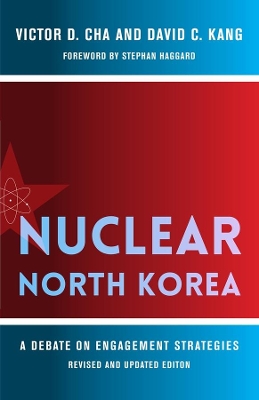Contemporary Asia in the World
2 total works
From the founding of the Ming dynasty in 1368 to the start of the Opium Wars in 1841, China has engaged in only two large-scale conflicts with its principal neighbors, Korea, Vietnam, and Japan. These four territorial and centralized states have otherwise fostered peaceful and long-lasting relationships with one another, and as they have grown more powerful, the atmosphere around them has stabilized. Focusing on the role of the "tribute system" in maintaining stability in East Asia and in fostering diplomatic and commercial exchange, Kang contrasts this history against the example of Europe and the East Asian states' skirmishes with nomadic peoples to the north and west. Although China has been the unquestioned hegemon in the region, with other political units always considered secondary, the tributary order entailed military, cultural, and economic dimensions that afforded its participants immense latitude. Europe's "Westphalian" system, on the other hand, was based on formal equality among states and balance-of-power politics, resulting in incessant interstate conflict.
Scholars tend to view Europe's experience as universal, but Kang upends this tradition, emphasizing East Asia's formal hierarchy as an international system with its own history and character. This approach not only recasts our understanding of East Asian relations but also defines a model that applies to other hegemonies outside the European order.
Scholars tend to view Europe's experience as universal, but Kang upends this tradition, emphasizing East Asia's formal hierarchy as an international system with its own history and character. This approach not only recasts our understanding of East Asian relations but also defines a model that applies to other hegemonies outside the European order.
Victor D. Cha and David C. Kang’s Nuclear North Korea was first published in 2003 amid the outbreak of a lasting crisis over the North Korean nuclear program. It promptly became a landmark of an ongoing debate in academic and policy circles about whether to engage or contain North Korea. Fifteen years later, as North Korea tests intercontinental ballistic missiles and the U.S. president angrily refers to Kim Jong-un as “Rocket Man,” Nuclear North Korea remains an essential guide to the difficult choices we face.
Coming from different perspectives—Kang believes the threat posed by Pyongyang has been inflated and endorses a more open approach, while Cha is more skeptical and advocates harsher measures, though both believe that some form of engagement is necessary—the authors together present authoritative analysis of one of the world’s thorniest challenges. They refute a number of misconceptions and challenge the faulty thinking that surrounds the discussion of North Korea, particularly the idea that North Korea is an irrational actor. Cha and Kang look at the implications of a nuclear North Korea, assess recent and current approaches to sanctions and engagement, and provide a functional framework for constructive policy. With a new chapter on the way forward for the international community in light of continued nuclear tensions, this book is of lasting relevance to understanding the state of affairs on the Korean peninsula.
Coming from different perspectives—Kang believes the threat posed by Pyongyang has been inflated and endorses a more open approach, while Cha is more skeptical and advocates harsher measures, though both believe that some form of engagement is necessary—the authors together present authoritative analysis of one of the world’s thorniest challenges. They refute a number of misconceptions and challenge the faulty thinking that surrounds the discussion of North Korea, particularly the idea that North Korea is an irrational actor. Cha and Kang look at the implications of a nuclear North Korea, assess recent and current approaches to sanctions and engagement, and provide a functional framework for constructive policy. With a new chapter on the way forward for the international community in light of continued nuclear tensions, this book is of lasting relevance to understanding the state of affairs on the Korean peninsula.

